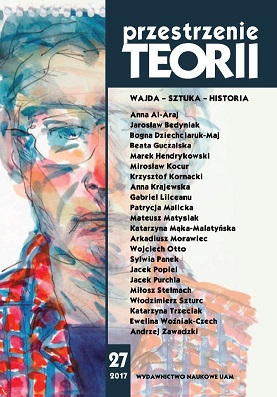Danton. Wektory interpretacji filmu Andrzeja Wajdy
“Danton”. Directions in interpretations of Andrzej Wajda films
Author(s): Włodzimierz SzturcSubject(s): Post-War period (1950 - 1989), Film / Cinema / Cinematography, Sociology of Art
Published by: Uniwersytet Adama Mickiewicza
Keywords: Andrzej Wajda; film; "Danton";
Summary/Abstract: In this paper, the author presents the final period of the French Revolution as interpretated by Andrzej Wajda. The screenplay was prepared by Jean-Claude Carrière based on Stanisława Przybyszewska’s drama (also used by Wajda as a screenplay in many dramas). It helped the director to describe the reality of the intense time of Robespierre’s terror and Jacobin efforts to guillotine Danton and his allies. Wajda reveals the same mechanisms of crime, manipulation and lies which became the backdrop for political events in Poland between 1981-1983 (especially with the introduction of martial law in Poland in 1981). The model of Danton’s fall and the strengthening of totalitarian rule are considered the current model of history, which is based on cruelty and the struggle for power. The film forms the basis for a broader view of history as the tragic entanglement of events, which is the result of hubris and the desire for material goods, and is the origin of totalitarian rule. References to the emblems of the revolution, allegories, and the symbolism of art (paintings of David) are the fundamental ekphrasis of meanings set by the film. Wajda’s analysis of Danton shows some typical ways of understanding and interpreting the signs of culture and history.
Journal: Przestrzenie Teorii
- Issue Year: 2017
- Issue No: 27
- Page Range: 59-76
- Page Count: 17
- Language: Polish

